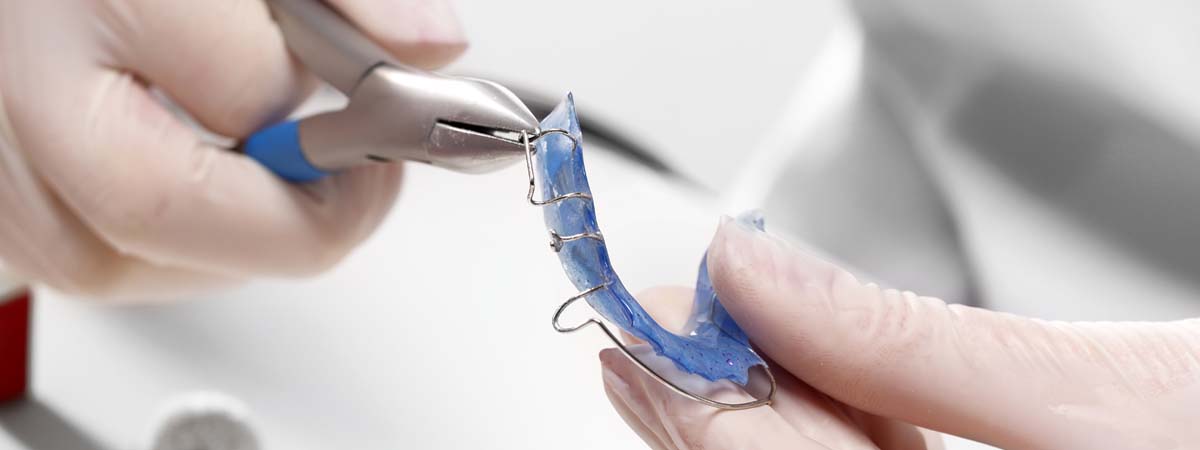 The Future of Orthodontic Labs
The Future of Orthodontic Labs
3D printing and computer aided design (CAD) tools are making orthodontic lab work easier to bring in-house and streamlining manufacturing by reducing the number of physical steps required to make appliances. This technology will significantly change how orthodontic care is delivered and the role orthodontic labs play in the marketplace.
To be able to assess the impact this will have on orthodontic labs themselves, we need to understand first the overall breakdown of the lab work they are currently performing. We were able to compile data from 8 orthodontic labs, ranging in size from one man operations to very large labs consisting of 100+ lab technicians, which gives us a pretty good sampling of the products produced by traditional orthodontic labs across the US.
The average data by appliance category for the labs surveyed is represented below:
| Appliance Type | AVERAGE |
| Hawley Retainers | 45.4% |
| Spring Retainers | 4.4% |
| ‘Invisible’ Retainers | 3.3% |
| Fixed Lingual Retainers | 3.0% |
| Functionals | 2.4% |
| Occlusal Splints | 2.0% |
| Expanders | 11.6% |
| Habit Appliances | 1.0% |
| Space Maintainers | 3.8% |
| Class II Correctors | 6.4% |
| Clear Aligners | 6.6% |
| Tooth Positioners | 4.5% |
| Indirect Bonding | 2.0% |
| Other (Study models, Mouth guards, etc.) | 3.7% |
Among the data, there were some other interesting findings:
- As the size of the lab decreased, the product mix shifted heavily towards Hawley retainers. Large labs would top out at about 20% Hawleys where as some single person labs saw 90%+ in Hawleys.
- Indirect Bonding and Class II Correctors (Herbst & MARA) were non-existent until you got into the larger commercial labs.
- Expanders, both fixed and removable, topped out in the medium size labs before decreasing with the larger labs. This may be due to them being combined with Class II Correctors, rather than being listed separately as an expander.
- Tooth positioners were also non-existent until you get into the larger labs in the market. Most of the universities are not utilizing tooth positioners anymore, thus small labs are not getting the demand to carry the product.
The appliances that are least technique sensitive to fabricate and those where significant advantages are gained by shifting work into the digital space are going to be most impacted by 3D printing. This will disproportionately affect the larger labs and primarily concerns ‘invisible’ retainers, study models, clear aligners, occlusal splints, and indirect bonding, which account for 13.9% of lab work performed by orthodontic labs based on the averages in our sample. Spring appliances may also be impacted if they are being done for tooth movement, since may doctors may opt to produce clear aligner in-house as an alternative. The appliances that will be least affected in the short term will be soldered and banded appliances since the advantages from 3D printing that would drive adoption aren’t as significant until such appliances can be directly printed.
How Orthodontic Labs Will Adapt
Given the significant impact that 3D printing technology will have on orthodontics in general, orthodontic labs will be forced to adapt. There are several ways in which we will see them changing their model:
- Providing supportive digital services so practices can outsource their digital workload and storage. The practice would then have the option of either manufacturing the physical appliance in-house, or having the lab fabricate and ship the appliance as they do now. Some labs have already begun to implement this. Ideally, the global economy would be leveraged to have the digital tasks performed overnight to increase productivity.
- Manufacturing and marketing direct-to-consumer products, either on their own or in partnership with other companies. Since these labs already have the infrastructure in place to manufacture and distribute products, this may be a natural transition.
- Offering training services, both on-site and online, for in-house orthodontic lab technicians.
- Focusing on products less affected by 3D printing. However, this is more of a delay tactic than a solution.
I enjoyed your article. I was pleasantly surprised to see that one of the ways ortho labs will adapt is through training in-house technicians. I have already moved in that direction. Thanks.